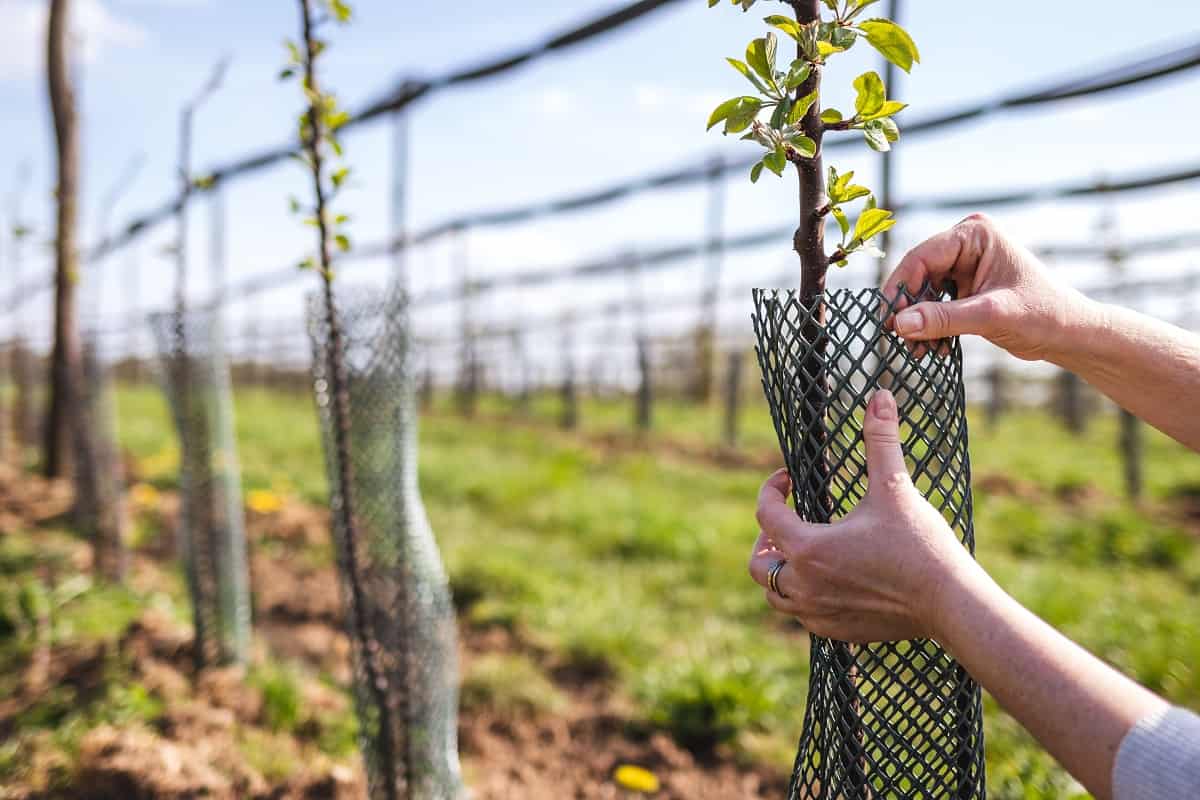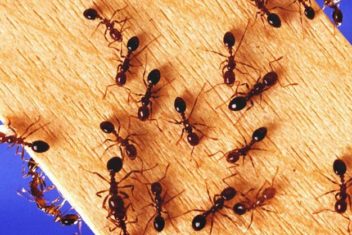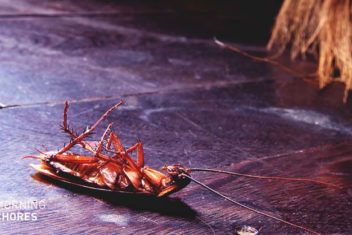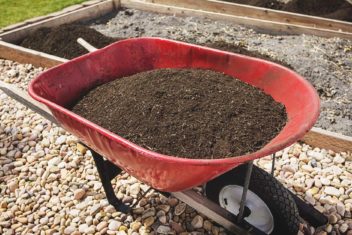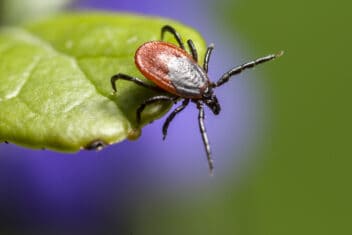For most homeowners, deer pose few problems. They’re majestic to look at as they graze among the trees, and as long as they don’t dart in front of your car, it’s so easy to love them.
If you have a homestead, however, deer can be problematic. Sure, they’re beautiful – but they also love to nibble on our plants.
Few gardens are immune to deer damage – except those surrounded by super-tall fences, of course. Deer are mostly indiscriminate in the vegetable garden, chewing on everything from broccoli to tomatoes.
However, it is in the orchard (or, around any kind of tree, for the most part) where deer can be the most destructive.
They’ll also paw at the soil around the trees, increasing the likelihood of erosion, and urinating on the area, which can lead to an excess of nitrogen in the soil.
There are a few tips you can follow to protect your trees from deer – that way, you can all co-exist in peace.
What Kinds of Trees Do Deer Prefer?
Deer will eat just about anything, but there are a few types of trees that are particularly beloved by deer.
Those that are nut- or fruit-bearing are some of the most common targets, but they’ll munch on evergreens, too. Trees like hickory, chestnut, beech, and white oak are common targets, as are domestic apple and pear trees, sumacs, honey locusts, persimmon, and crabapple trees.
Your first line of defense in safeguarding your trees is to plant species that are not attractive to deer. Few trees are off-limits, but you may be able to deter deer by planting species with prickly, hairy, or fuzzy foliage around the base of your vulnerable trees.
Deer also tend to stay away from plants with strong-smelling foliage, foliage that is leathery or fibrous, and toxic plants.
When you’re planning out your garden, it’s also important to note that eating isn’t the only threat that deer pose to trees. They often harm trees even more via their breeding behaviors.
Male deer often rub their antlers against trees, ruining the bark and causing significant damage. This is done during mating to attract females or mark territory, but it can also be done to help remove the velvet from their antlers and to polish them.
Unfortunately, these behaviors can not only result in gnawed-on trees but also torn bark and broken branches.
How to Protect Your Trees from Deer
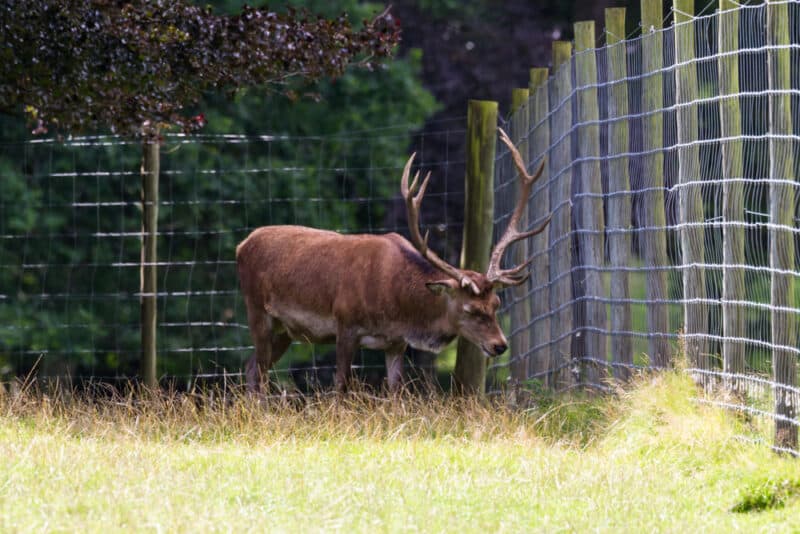
Here are a few ways to keep deer from targeting your trees. While no single solution will be perfect on its own, combining these techniques will allow you to design your long-lasting approach that works.
1. Install Tall Fences (or Consider Electric Fences)
Installing a tall fence or cage around your plants is one of the easiest ways to keep deer away.
To prevent deer from getting to your trees, you will need to make sure it is at least 8-10-feet high. Otherwise, deer can easily step or leap over it. Fencing can be expensive, but it’s worth it when you consider the damage that deer can do to your trees.
You may have to angle the fence about 30° or so. This will provide an extra layer of protection. Although it’s not as common as you might think, it is still possible for deer to clear super tall fences by jumping. Angling the fence will make this more difficult.
If you’re trying to protect young saplings, you may be able to use inexpensive cages made out of chicken wire. This will protect a tree from deer when it is more sensitive and vulnerable to damage. Just make sure the cage you use can be expanded to allow for the growth of the tree.
When building a fence, consider paying a bit more money to install a stockade fence instead of one that deer can see through. They don’t like to jump over fences unless they can see clearly what is on the other side – therefore, a stockade fence will be just as effective without having to be quite as tall.
Of course, an electric fence is always an option too. Not all places allow them, so check the regulations in your municipality to make sure.
An electric fence can be solar- or battery-powered, but you’ll need to keep the highest strand quite high so that deer can’t jump over it.
2. Protect Young Trees With Collars
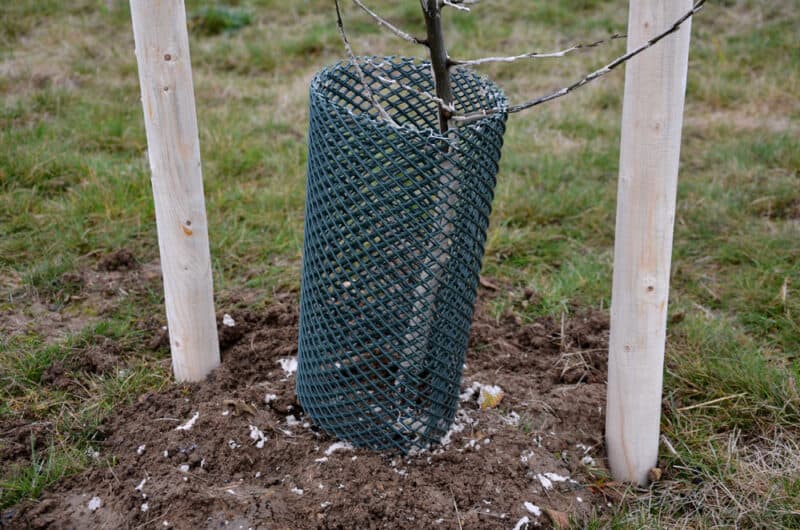
If you’ve just planted your trees, it may make sense to use a homemade collar to protect their stems. Use a bit of PVC pipe that’s large enough to fit around the trunk with a few inches of extra space. Cut the pipe along its length to open it up then slip it around the trunk when you plant.
This won’t protect the tree from deer as it gets older, but it’s an effective and inexpensive way to keep your trees safe when they’re working on setting roots.
PVC pipe is not your only option, either. You can also use heavy mesh or wire fencing. Just roll sections of these materials around the trunk of the tree then secure. Be sure to check back in and remove the collar once the tree gets larger.
3. Hunt
Unless you’re already an avid deer hunter, this might not be the easiest way for you to get rid of the deer that are eating your trees.
However, if you enjoy hunting for subsistence or sport, then hunting the deer that keep eating your trees (legally, of course) is a good way to solve your problem.
4. Use Deer Repellants
A deer repellant offers a temporary solution to your deer problem but it can be effective nonetheless.
The idea behind deer repellants is this – deer don’t like the taste! Applying a repellent to the tree should stop any nibbling that’s going on, though it might not be as effective against rubbing.
There are all kinds of deer repellants you can use, including an egg and water mixture, pieces of deodorant soap, and commercial repellant sprays.
Over time, the deer will grow accustomed to the smell and they may stop avoiding your trees. You’ll need to change up your tactics at this time.
5. Get a Dog

You don’t need to train your dog to attack deer (and you shouldn’t, either – this is not the most ethical approach). However, simply having a dog hanging around may deter deer from approaching your trees. Most of the time, they’ll be able to smell your dog and will steer clear.
6. Plant Deer-Resistant Plants
The best way to protect your trees and prevent deer from messing with them is to choose plants wisely. If you can swing it, avoid planting species that deer love to eat.
However, this isn’t always possible. If you want to grow an apple orchard, your only choice is to grow apples!
Therefore, you may have to engage in some strategic planning – what plants can you plant near or surrounding the more desirable tree species to keep deer at bay?
Again, choose plants that are toxic to deer or have prickly, unpleasant foliage. Grow these around the base of your plant whenever possible to repel deer. Some good options include:
- Globe thistle
- Bleeding hearts
- Daffodils
- False indigo
- Monkshood
7. Use Sprinklers
It sounds silly, but deer can easily be deterred by motion-activated sprinklers.
This won’t be the best technique in the winter, since the sprinklers will need to be drained and stored, but they can work at night and during the day. The sudden motion of the sprinklers will startle deer when they approach your trees – chances are, they won’t come back right away.
Try a Variety of Strategies
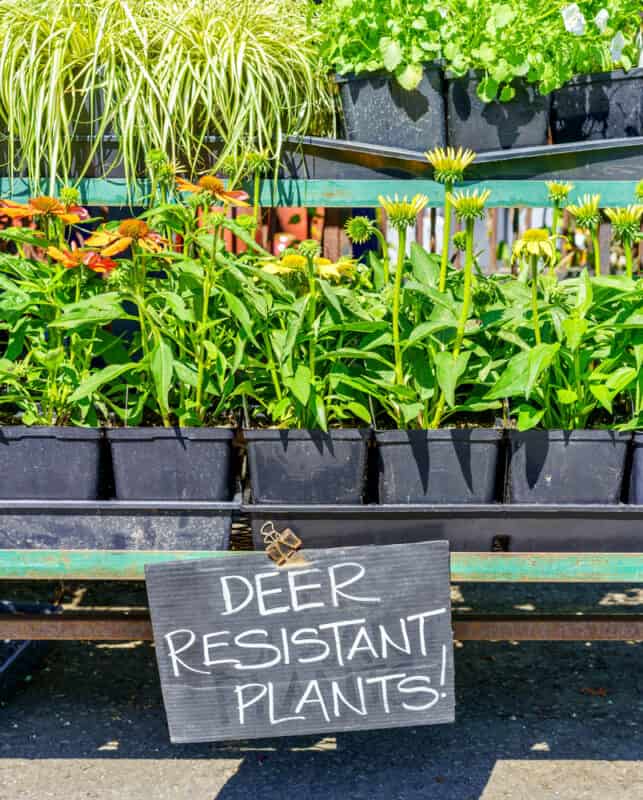
If deer are targeting your trees, whether it’s by physically damaging them with their antlers or eating them, there are a few steps you can take to minimize the damage. You’ll have the best results if you combine a medley of the tips listed above rather than relying on just one “hack” to get rid of deer around your trees for good.
It’s important to take action if you notice deer damage on your trees though. That’s because trees, especially young ones, are quite vulnerable to this kind of damage. If they’re injured, they won’t be able to transport water or nutrients effectively – two things that are vital for a tree’s survival.
